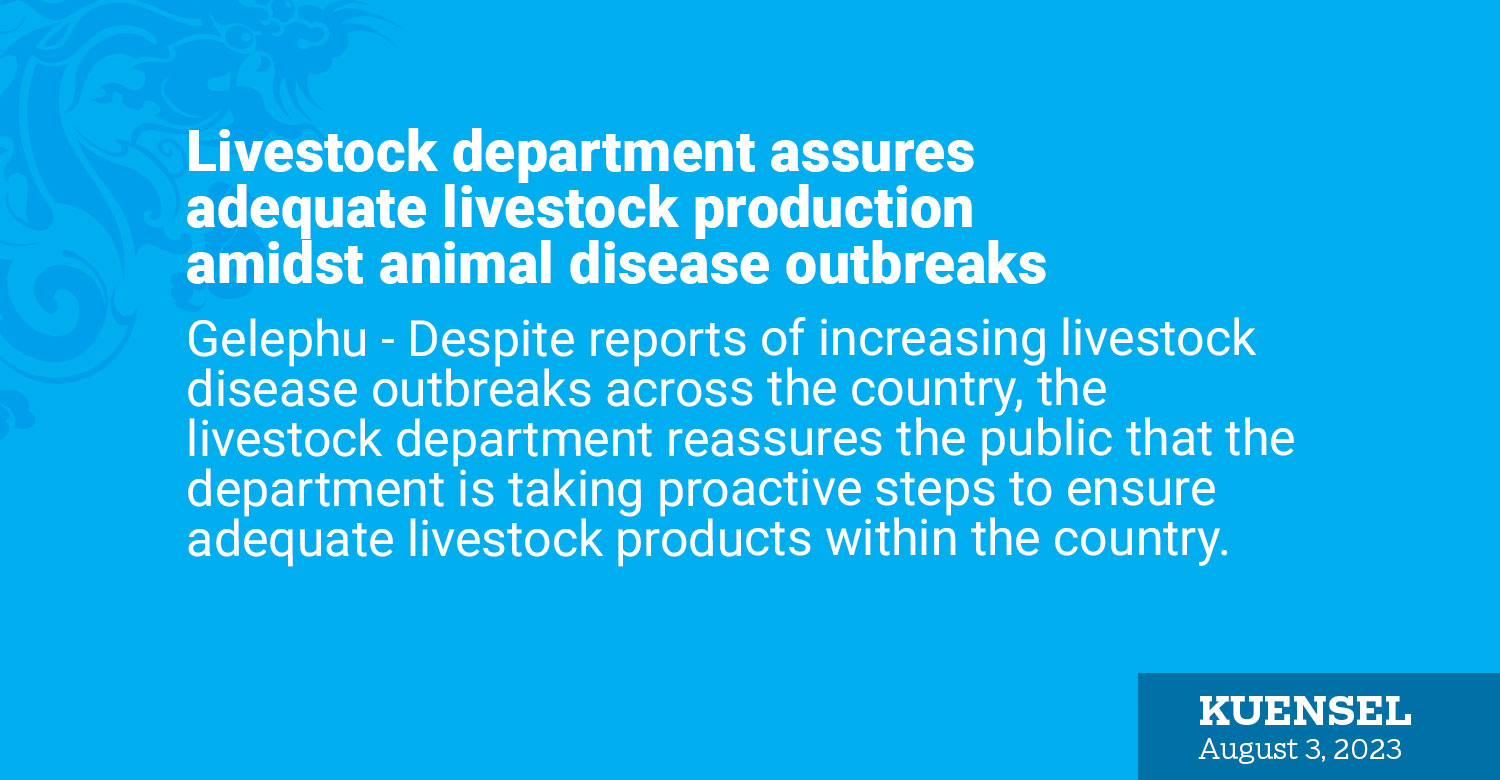Lhakpa Quendren
Gelephu – Despite reports of increasing livestock disease outbreaks across the country, the livestock department reassures the public that the department is taking proactive steps to ensure adequate livestock products within the country.
The National Poultry Development Centre in Sarpang has plans to resume the supply of the hyline brown chicken breed by next week, but the farms will not be able to produce the eggs until November.
As poultry farmers abandoned farms, there are reported egg shortages in the market, which has led to drastic increase in the price of eggs. Outbreaks of lumpy skin disease (LSD) and African swine fever (ASF) were reported from many dzongkhags.
Department of Livestock’s chief veterinary officer, Dr Rinzin Pem, said the farm registration system for piggery and poultry is being developed. This is expected to enable livestock input farms to initiate production and distribution of piglets and day-old chicks (DOCs) for consistent production and supply of inputs. “This will ensure consistent and adequate livestock production.”
The department, she said, will continue with the supply of adequate and quality inputs of DOCs, fingerlings, piglets, artificial insemination (AI) services, and associated inputs like liquid nitrogen (LN2). “The input farms with the department are further strengthening the input supply chains with the dzongkhags.”
The statistics from the livestock department reveal that 10,567 cattle have been infected with LSD, while 863 cattle have died from the disease in the last six months. A total of 377 pigs have been killed from the AFS from May 6 to July, costing the government Nu 32.5 million to implement response measures and compensation for pigs culled to prevent further spread.
Dr Rinzin Pem said that the department also enhanced collaboration among relevant stakeholders of one health at the dzongkhag level, which means joint outbreak investigations and responses of the diseases. She said the department has also strengthened the efficiency and reporting of zoonotic events and incidents across sectors for quick actions.
Challenges and way forward
To improve animal health and productivity, Dr Rinzin Pem said, the department aims to raise increased awareness and educate livestock farmers to adopt good management practices and strengthen their farm biosecurity. “Ensuring farms fulfill the minimal biosecurity requirements based on the biosecurity standards. The biosecurity of the farms is being monitored by the Bhutan Food and Drug Regulatory Authority.”
However, with the increasing incidents of transboundary animal diseases that can spread rapidly irrespective of national borders, she said that the age-old practices of livestock farming are no longer adequate to prevent and control these diseases from spreading.
The unprecedented animal disease outbreaks are the result of various factors, such as inadequate manpower in the field due to the high attrition rate within the livestock sector.
The shortage of manpower has led to increased turn-around-times in service delivery, low vaccination coverage for disease outbreak prevention, and contributed to burnout as well as physical and mental exhaustion among the workers due to work overload.
Furthermore, the quality of service has been hampered due to a decrease in consultation time, lack of focus due to multitasking, and failure to provide follow-up treatment – an imminent threat of antimicrobial resistance development in the near future.
To mitigate the impact of manpower shortage, Dr Rinzin Pem, said that the department would adopt strategies such as recruitment of retired livestock officials who are interested and fit for service delivery, veterinary paraprofessionals on a regular, or contract basis, and increase the undergraduate slots for students to pursue veterinary science degree.
The strategy also includes increasing the network of services through training of community animal health workers, building public-private partnerships to share responsibility amongst stakeholders, prioritising services and resources to offset the burden and improve efficiency, and provision of better mobility facilities to improve service reach.
The attrition rate of veterinarians has been a big concern for the department. Recent trend shows a substantial number of technical personnel leaving their positions. In contrast, the recruitment and replacements have remained quite low.
Currently, there are 609 personnel – 535 technical and 74 non-technical staff within dzongkhag and central programmes.
However, there remains a human resource gap of 75 personnel, including the livestock supervisor, the veterinary officer, and the dzongkhag livestock officer.


